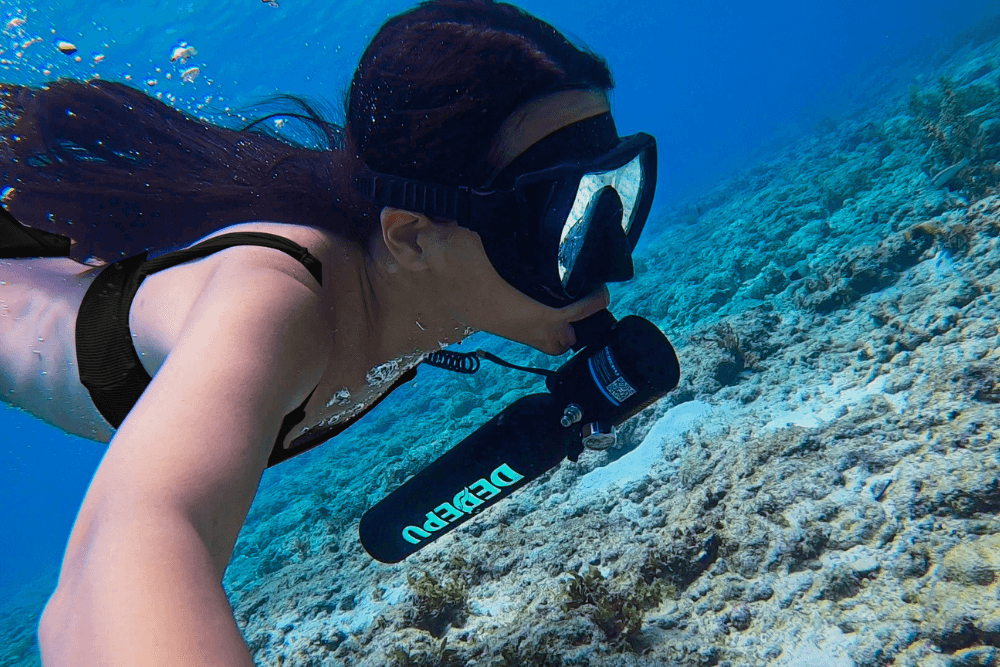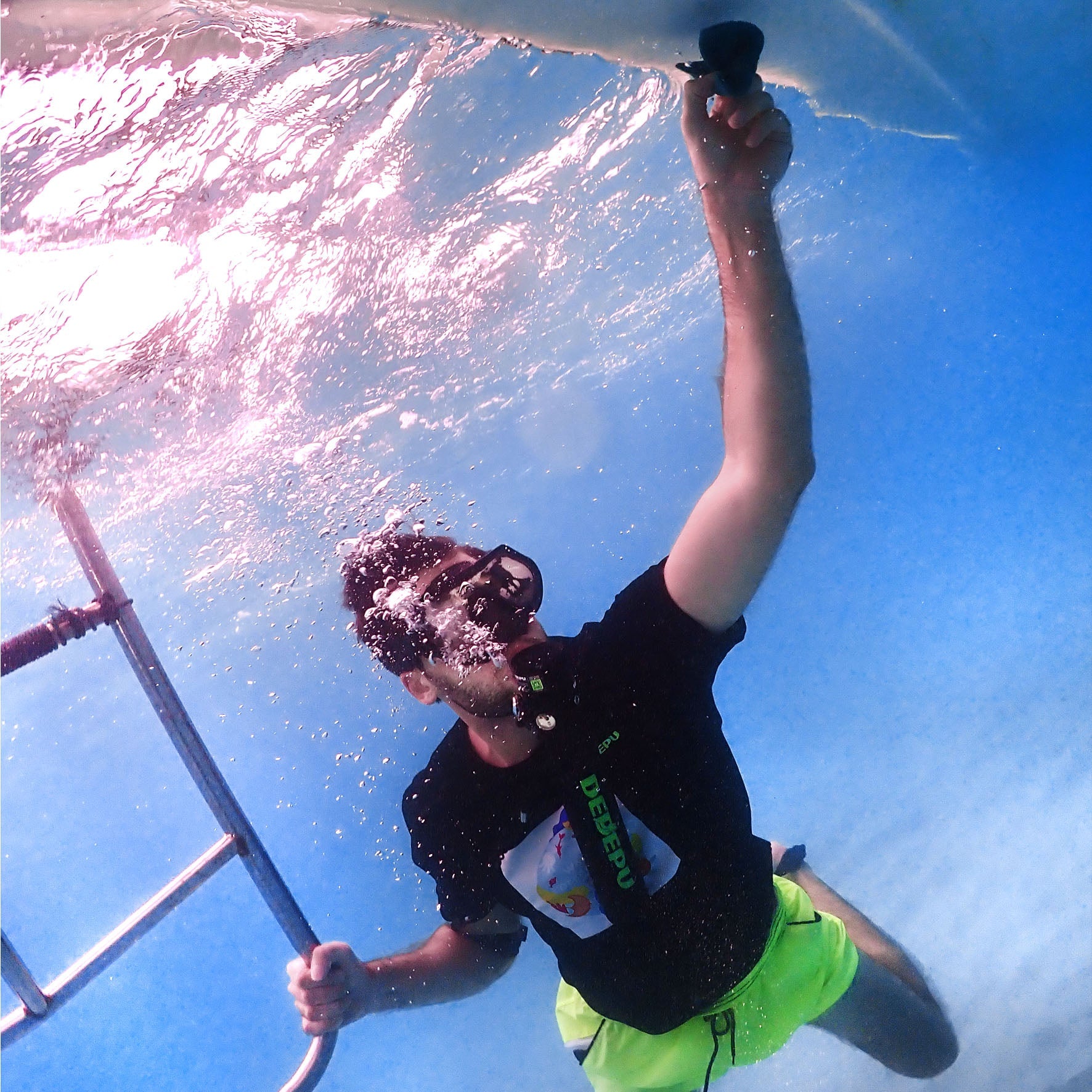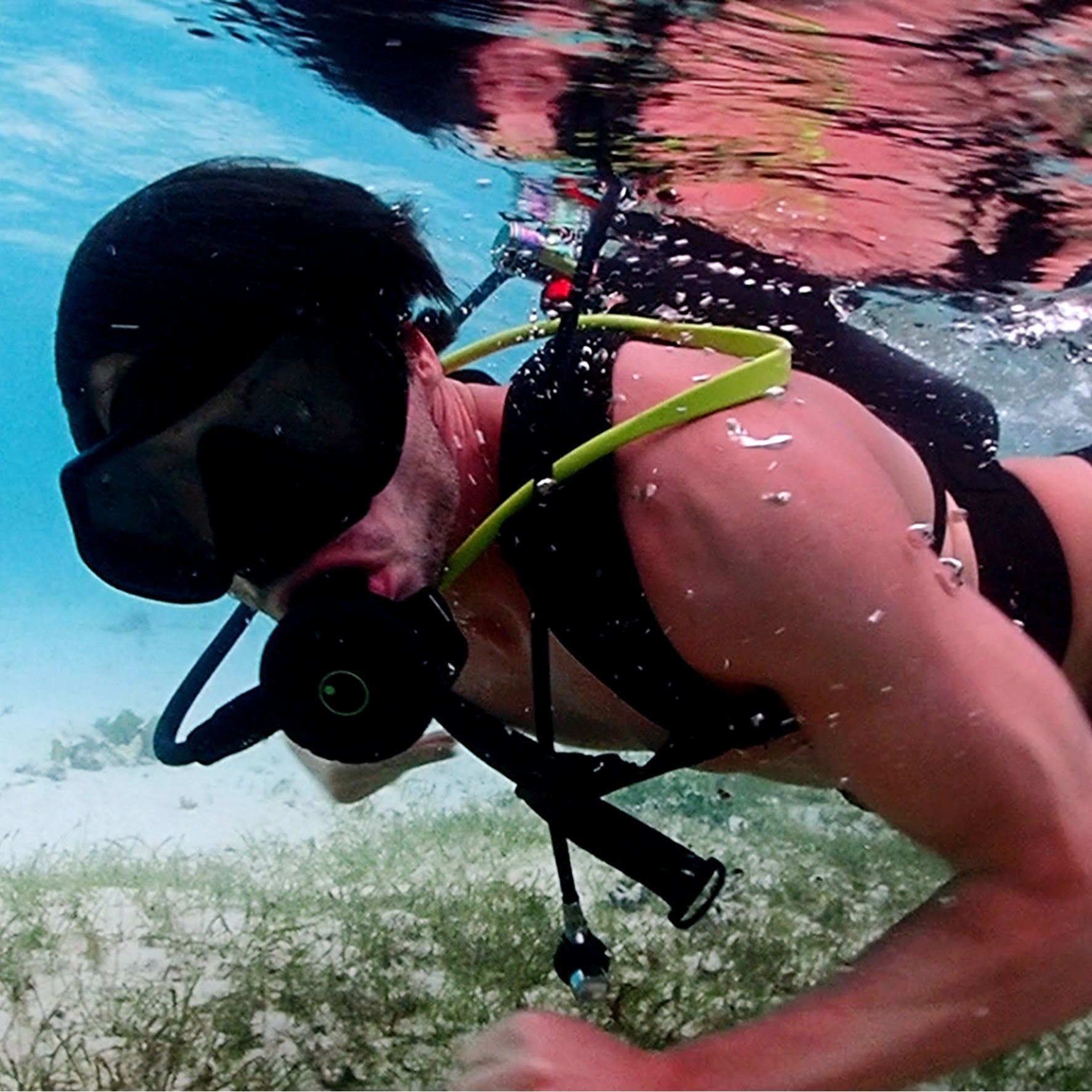Tank Material Types
Scuba tanks are primarily made from aluminum or steel, each with distinct characteristics affecting performance. Aluminum tanks weigh 30% less than steel but require 2kg extra lead weight for neutral buoyancy. Steel tanks maintain better buoyancy, becoming only 20% more buoyant when empty compared to aluminum's 40% float shift. Composite tanks are rare but offer 50% weight reduction over steel. Aluminum tanks typically last 10-15 years, while steel tanks can exceed 20 years with proper maintenance.
Aluminum Tanks
The table below outlines key aluminum tank specifications:
|
Feature |
Specification |
Impact |
|---|---|---|
|
Weight |
12-15kg (empty) |
30% lighter than steel |
|
Buoyancy Shift |
+40% when empty |
Needs extra lead |
|
Lifespan |
10-15 years |
Shorter than steel |
|
Pressure Capacity |
200-207 bar |
Standard for rec diving |
|
Corrosion Resistance |
High in saltwater |
Low maintenance |
Aluminum tanks dominate the recreational market due to their lightweight design. They are easier to handle for most divers, especially during shore entries. Their rust-resistant nature makes them ideal for saltwater use, though they dent more easily than steel. When empty, they float significantly, requiring proper weighting adjustments. Most warm-water divers prefer them for their manageable weight and low maintenance.
Steel Tanks
The table below compares steel tank properties:
|
Feature |
Specification |
Impact |
|---|---|---|
|
Weight |
15-18kg (empty) |
Heavier but stable |
|
Buoyancy Shift |
+20% when empty |
Less lead needed |
|
Lifespan |
20+ years |
Longer durability |
|
Pressure Capacity |
232-300 bar |
Holds more air |
|
Corrosion Resistance |
Requires coating |
Needs more care |
Steel tanks are favored by technical divers for their superior buoyancy control. Their negative buoyancy helps divers stay submerged with less added weight. They last longer than aluminum but require regular maintenance to prevent rust. High-pressure variants store more air in a compact form, ideal for extended dives. Their durability makes them suitable for rough conditions, though their heft can be challenging for some divers.
Composite and Specialty Tanks
Composite tanks, made from carbon fiber or other advanced materials, are lighter but less common. They weigh 50% less than steel but come at a higher price. Their corrosion resistance is excellent, but their availability is limited. Older steel tanks may need frequent hydrotesting, while modern aluminum tanks offer longer service intervals. The best material choice depends on dive type, budget, and personal preference, with each offering unique benefits for different diving scenarios.
Size and Capacity
Standard 12L tanks suit 90% of recreational dives, providing 45-60 minutes at 15-20m depths. Larger 15L tanks extend dive time by 25% but weigh 30% more, while compact 8L tanks are 20% lighter but cut air supply by 40%. High-pressure 232-bar tanks hold 15% more air than standard 200-bar tanks of the same size. Overweight divers may need 10% larger tanks to compensate for extra lead weight. Matching tank size to dive plans and physical ability ensures optimal air supply without excessive bulk.
Common Tank Sizes and Uses
The table below compares popular tank sizes and their applications:
|
Tank Size (Liters) |
Air Capacity (200 bar) |
Average Dive Time |
Best For |
|---|---|---|---|
|
8 |
1600L |
30-40 min |
Snorkeling backup |
|
10 |
2000L |
40-50 min |
Warm shallow dives |
|
12 |
2400L |
50-70 min |
Recreational diving |
|
15 |
3000L |
70-90 min |
Technical diving |
|
18 |
3600L |
90-120 min |
Commercial diving |
12L tanks are the most versatile, balancing capacity and weight for 90% of divers. 8L tanks work well for short dives or secondary air sources, saving 20% weight. 15L+ tanks suit extended dives but require stronger back support. High-pressure tanks (232-300 bar) fit more air but need special regulators. Low-pressure tanks (200 bar) are easier to fill at most dive shops.
Capacity vs. Diver Needs
New divers consume 25% more air than experts, often needing larger tanks. Deep dives below 30m triple air consumption, making 15L tanks preferable. Strong currents increase breathing rates by 30%, shortening dive times unexpectedly.
According to Dive Training Magazine, "Women divers typically use 15% less air than men due to smaller lung capacity."
Cold water diving raises air demand by 10%, requiring extra reserves. Proper weighting prevents overexertion, keeping air use efficient.
Weight and Portability Tradeoffs
Steel 12L tanks weigh 14kg full, while aluminum 12L tanks are 2kg lighter. Larger 15L tanks add 5kg more weight, straining long surface walks. Compact 8L tanks reduce travel fatigue but limit bottom time. Double tank setups double air supply but require special training. Tank bands and harnesses distribute weight 20% better than single straps. Choosing wisely based on dive type and fitness level prevents post-dive exhaustion.

Buoyancy Characteristics
Aluminum tanks become 40% more buoyant when empty, requiring 2kg extra lead weight to stay neutral underwater. Steel tanks shift only 20% in buoyancy, making them more stable throughout the dive. Saltwater increases buoyancy by 2% compared to freshwater, affecting weighting decisions. New divers often use 10% more weight than needed due to inexperience with buoyancy control.
Material Impact on Buoyancy
Aluminum tanks start negatively buoyant but float when empty, creating a 40% buoyancy shift that requires adjustments during ascent. Steel tanks remain negatively buoyant, shifting just 20% when empty, which helps maintain better depth control. Composite tanks offer neutral buoyancy but are rare and expensive. Cold water increases tank buoyancy by 5% due to denser conditions, while warm water reduces it slightly. Proper weighting checks before diving prevent 15% of buoyancy-related issues. Experienced divers fine-tune weights to within 0.5kg for perfect balance.
Weighting Strategies for Different Conditions
• Saltwater diving needs 3-5% more weight than freshwater due to higher density
• Thick wetsuits add 2-4kg buoyancy, requiring extra lead
• Steel tanks allow 1-2kg less weight than aluminum for the same neutral buoyancy
• Shallow dives need precise weighting to avoid bottom contact
• Deep dives require checks at safety stops to confirm proper ascent buoyancy
Overweighting causes 20% more air consumption from extra effort. Underweighting leads to difficult descents and uncontrolled ascents. Testing buoyancy at the surface with empty lungs confirms neutral buoyancy at 5m. Adjustable weight systems help divers fine-tune buoyancy during the dive.
Buoyancy Control Techniques
Breath control adjusts buoyancy by 5-10%, helping maintain depth. Slow movements prevent sudden buoyancy shifts that waste air. Proper trim reduces drag by 15%, making buoyancy easier to manage. BCD use should be minimal, with small air adjustments for stability. Regular practice improves buoyancy precision by 30% over time.

Weight Distribution Tips
Divers with balanced weights use 15% less air than those with poor distribution. Steel tanks need 2kg less weight than aluminum but require better positioning to prevent back strain. New divers often place 20% more weight on their waist, causing leg drag and poor trim. Evenly spread weights reduce fatigue by 30% and improve underwater maneuverability.
Balanced Weight Placement
-
Trim pockets on tank straps help shift 40% of weight higher, improving horizontal trim
-
Ankle weights correct leg float issues but add 5% more drag
-
Integrated BC weights distribute load evenly, reducing shoulder pressure by 20%
-
Weight belt positioning near the hips prevents lower back strain
-
Tank weight distribution affects trim 50% more than accessory weights
Front-heavy setups cause 10% more effort to maintain depth. Back-weighted divers struggle with ascents, needing 5% more air. Testing buoyancy in shallow water confirms proper weight placement. Adjustable systems allow on-the-fly changes during dives.
Material and Weight Impact
Aluminum tank users require 2kg more lead but should place it higher to offset tank buoyancy shifts. Steel tank divers can reduce waist weight by 30% and add shoulder weights for balance. Freshwater diving needs 5% less weight than saltwater, adjusted across chest and hips.
According to Dive Comfort Studies, "Even 0.5kg misplacement disrupts trim by 15% in new divers."
Seasoned divers fine-tune weights to within 0.25kg for perfect balance.
Real-Time Adjustment Techniques
Mid-dive weight checks fix 80% of trim issues before they worsen. Removing 1kg during ascent prevents floaty feet. Adding chest weight stabilizes uncontrolled rolls in currents. Recording weight logs helps repeat successful setups. Buddy checks catch 50% of placement errors before descent.
Safety Checks
90% of dive incidents can be avoided with proper pre-dive inspections. O-ring leaks account for 25% of air loss cases, while regulator malfunctions cause 15% of emergencies. Tank pressure gauges fail in 5% of dives, leading to false air supply readings. First-time divers miss 30% of critical checks compared to experienced divers. Monthly professional servicing catches 80% of hidden issues before they become dangerous.
Pre-Dive Equipment Inspection
Visual tank checks should look for dents or corrosion, which weaken structural integrity by 20%. O-ring inspections prevent 10% of air leaks, especially at valve connections. Regulator tests confirm smooth airflow, as sticky purge buttons cause 15% of breathing issues. BCD inflator checks ensure no leaks, since faulty valves lead to uncontrolled ascents in 8% of cases. Weight system security prevents loss during entry, which happens in 5% of unprepared divers.
Underwater Emergency Protocols
Buddy checks before descent catch 40% of overlooked problems, like loose hoses or masks. Air sharing drills prepare divers for 10% of out-of-air emergencies. Controlled ascents at 9m per minute prevent 80% of decompression risks. Equalizing frequently avoids ear barotrauma, which affects 30% of new divers. Monitoring gauges every 5 minutes prevents 15% of air shortage surprises. Hand signals practice ensures clear communication, reducing confusion in 25% of incidents.
Post-Dive Maintenance Habits
Rinsing gear with fresh water prevents 50% of saltwater corrosion damage. Drying regulators thoroughly stops 20% of internal valve failures. Storing tanks with 50 bar pressure keeps moisture out, extending valve life by 30%. Checking hose integrity monthly avoids 5% of ruptures during dives. Recording service dates ensures timely maintenance, preventing 90% of avoidable breakdowns.




Laisser un commentaire
Tous les commentaires sont modérés avant d'être publiés.
Ce site est protégé par hCaptcha, et la Politique de confidentialité et les Conditions de service de hCaptcha s’appliquent.